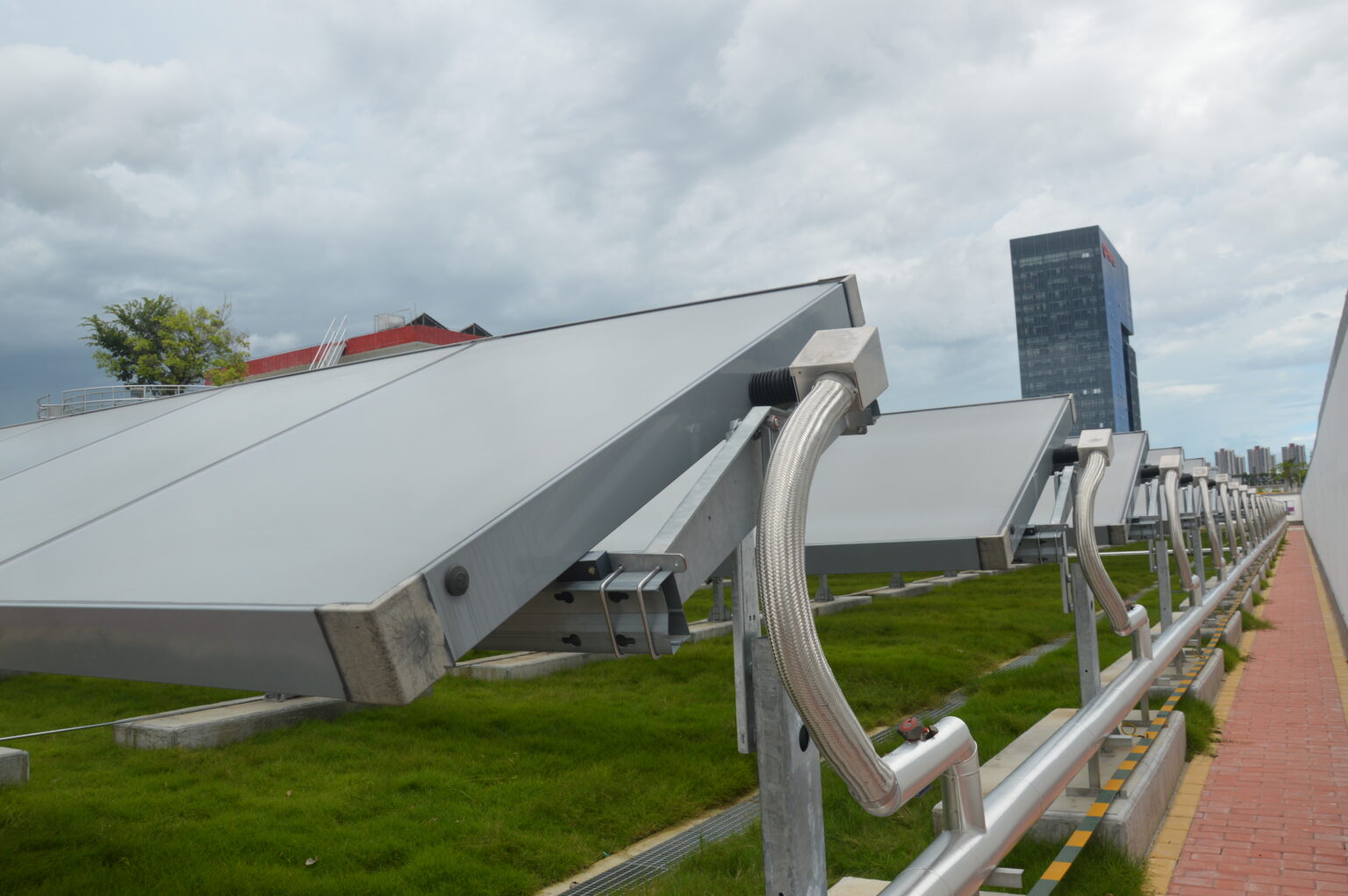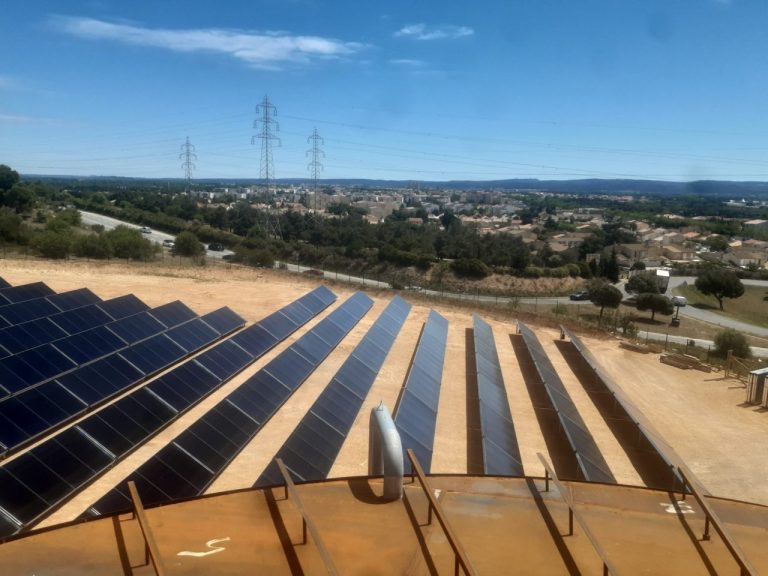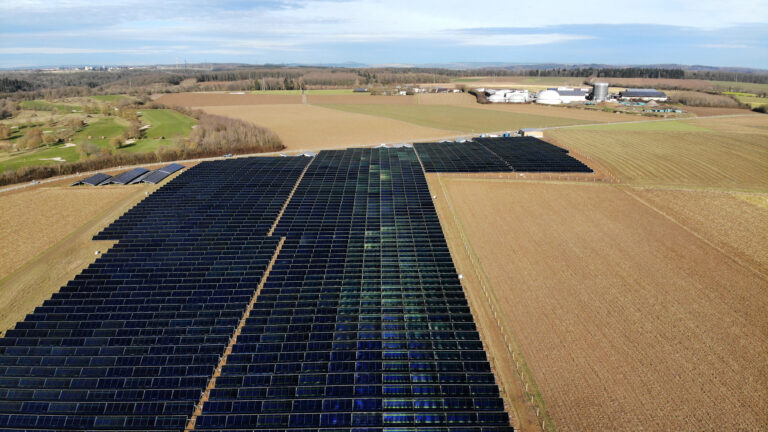
Savosolar has been selected to deliver a tracker mounted solar thermal plant for the district heating of Nansha, Guanghzou, China. The system is combined with a geothermal seasonal storage and a chiller (not in Savosolar’s scope of supply) which allow the owner to deliver healthy energy, both heating and cooling, to its customers.

With a size over 13,000 m2, this system is the second largest solar heating system in France and the second largest solar thermal system for industrial process heating in Europe. Savosolar has delivered the largest part of the whole solar thermal plant including the solar collector field, civil work, piping and design and delivery of heat exchange station.
Kyotherm and its affiliate Kyotherm Solar are investment companies which specialize in the third-party financing of renewable heat and energy efficiency projects. Kyotherm Solar is selling heat from this system to a malt drying factory, which is operated by Malteries Franco-Suisses.

With this new solar thermal plant for newHeat, Savosolar add a new leading reference in the French market of solar district heating. This approximately 3,000 m2 solar thermal field (aperture), will allow to replace 2,410 MWh of former gas heated heat by renewable heat on Narbonne’s city network, manage by a subsidary of Dalkia.
Savosolar, on the behalf of newHeat, built mainly the whole solar plant, from the solar collector’s field until the outlet of the heat exchanger to the storage thermal tank, ie: solar field, piping and solar station. More then 200 of our Savo 15 SG-M collectors, ensuring a high energy yield while reducing 510 tons of CO2 emissions per year from the district heating system of the city. The production of solar field during winter will even allow an increasing of the yield of the existing biomass boiler.

UNDER CONSTRUCTION
Bad Rappenau, Germany (largest flat plate collector plant in Germany)
Summa Energy has been selected as general contractor to build a +20 MW solar thermal system on behalf of Bauer Holzenergie GmbH for its district heating network, which supplies households and an industrial process for drying fruits with healthy heating. Only about 1,800 pieces of Savo 16S large scale high performance flat plate collectors are sufficient to getting combined with an 8,000 m³ heat storage tank and
provide carbon free heat for the needs of all connected consumers.
Additionally, a PV system will be built on site to generate the electricity consumed by the solar pumps, thus
unburdening the local power grid.